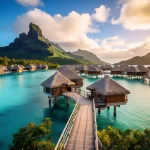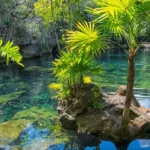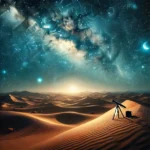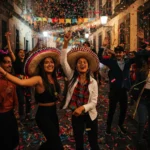Aurora Borealis Overview
The Aurora Borealis, also known as the Northern Lights, is a spectacular natural phenomenon that attracts tourists worldwide. In 2023, some of the best destinations for viewing this celestial display include Sweden, Northern Finland, Norwegian fjords, Greenland, on an Arctic Circle cruise, Fairbanks in Alaska, and the Upper Peninsula in Michigan. These locations offer unique experiences, from witnessing vibrant lights in dark, clear skies to enjoying them in comfort on cruises or in specially designed accommodations. The ideal time for viewing is typically during the winter months, and activities like photography, hiking, and snow-based adventures enhance the experience. The Aurora is a natural and somewhat unpredictable phenomenon, adding to its allure and making it a sought-after experience for nature enthusiasts and travelers alike.
Sweden: A Northern Lights Sanctuary

Sweden, particularly its northern regions, offers some of the most spectacular views of the Aurora Borealis. During winter, the country transforms into a celestial theater, displaying vibrant lights in the night sky. Ideal viewing times are generally between 10 pm and 11 pm, though the Aurora can be visible from 6 pm to 2 am under perfect conditions. This phenomenon is best observed away from city lights, in areas north of the Arctic Circle. The experience is not just about the lights but also about embracing the Swedish winter, with activities like dog sledding and snowshoeing adding to the adventure. Tourists are advised to dress warmly, as temperatures can plummet to -15 Celsius.
Northern Finland: Winter’s Emerald Skies

In Northern Finland, the Aurora Borealis is a regular spectacle during the winter months, with the sky often painted in shades of emerald green. The region’s vast open spaces and hilltops, especially near the Hossa National Park in East Finland, offer prime viewing spots. Here, tourists can enjoy scenic lakeside paths by day and stunning Aurora displays by night. The Finnish Lapland, in particular, is renowned for about 200 nights of Northern Lights annually. Accommodations like glass igloos and Arctic resorts provide unique experiences, blending comfort with the magic of the night sky.
Norwegian Fjords: A Magical Light Show

The Norwegian fjords offer an ethereal experience for Northern Lights seekers. In Northern Norway, the combination of magnificent landscapes and clear, dark skies creates a perfect backdrop for the Aurora Borealis. Cities like Tromsø, located in the heart of the auroral oval, turn into hubs for Northern Lights tours. The region is not only about the lights but also about exploring the stunning natural beauty, with activities like hiking and sailing. In the winter months, when daylight is limited, the dark skies serve as a canvas for this natural phenomenon.
Greenland: Pristine and Untouched
Greenland’s minimal light pollution and clear skies make it an ideal location for Aurora viewing. The country’s vast ice plains and remote settlements provide a unique backdrop, far removed from urban life. Nuuk, the capital, offers surprising views of the Northern Lights, despite being an Arctic city. The west coast, especially Ilulissat, is known for its stunning views of the Aurora over the Ilulissat Icefjord and Disko Bay. Visitors can engage in activities like snowshoeing, dog sledding, and snowmobiling to enhance their experience.
Arctic Circle Cruise: A Sea of Lights
Catching the Northern Lights from an Arctic Circle cruise is an experience unlike any other. These cruises offer more than just sky gazing; they are floating classrooms providing photography lessons, lectures, and star-related activities. Some cruises even offer wake-up services for nocturnal Aurora displays. In addition, companies like Elding and Hurtigruten offer unique viewing experiences with guarantees, promising another cruise if the lights don’t appear.
Fairbanks, Alaska: A Northern Lights Marathon
Fairbanks, Alaska, offers a long viewing season for the Northern Lights, stretching from early September to mid-April. This extended period allows visitors to choose the perfect time for their Aurora experience. The destination offers a range of activities, from snowcat tours to evening ice-fishing and flights above the Arctic Circle. Heated viewing lodges provide comfort and photography tips for a complete experience.
Upper Peninsula, Michigan: Aurora Over Lake Superior
The Upper Peninsula of Michigan, particularly along the southern shoreline of Lake Superior, becomes a prime spot for viewing the Northern Lights. The auroral oval’s southward swing during intense activity periods turns this region into an ideal location for the celestial display. Dark Sky Parks like the one in Copper Harbor offer unobstructed views of the lights, with accommodations like the historic Keweenaw Mountain Lodge enhancing the experience.
Frequently Asked Questions (FAQ)
- What is the best time to see the Northern Lights? The best time to view the Northern Lights is typically during the winter months, from late September to March. However, this can vary based on location.
- Can the Northern Lights be seen in urban areas? While it’s possible, it’s less likely due to light pollution. Remote areas with dark skies offer better viewing opportunities.
- Do I need special equipment to photograph the Northern Lights? A camera with manual settings and a tripod is recommended for capturing the lights effectively.
- Is it cold when viewing the Northern Lights? Yes, it can be very cold, especially in the Arctic regions. Warm clothing is essential.
- Can the Northern Lights be predicted? While there are forecasts, the Aurora Borealis is a natural phenomenon and can be unpredictable.












